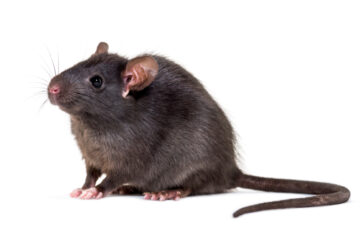 |
|||||||||||||||||||||||||||||||||||||||||||||
|
CSISS Updates Summer Sensations | CSISS Birthday Celebrations I From the Field | Chafer Beetles | | Captivating Content | Staff Updates | Upcoming Events | |
|||||||||||||||||||||||||||||||||||||||||||||
 |
|||||||||||||||||||||||||||||||||||||||||||||
|
Save the Date: October 17th (10am-12pm) CSISS AGM! Annual General Meeting will include updates from partners, including highlights from summer project work. Meeting will also include CSISS summer program updates, Financial updates and Board of Directors Election! Please be in touch if you have any updates or questions you’d like to share at our AGM on invasive species work in the Columbia Shuswap region, or if you’re interested in joining our Board of Directors. For more information, contact: info@columbiashuswapinvasives.org Location : Shuswap (to be confirmed) and online option Registration and more information to follow in an invite soon! |
|||||||||||||||||||||||||||||||||||||||||||||
Summer Sensations |
|||||||||||||||||||||||||||||||||||||||||||||
 |
|||||||||||||||||||||||||||||||||||||||||||||
|
Summer 2023 was an action-packed season! Our dedicated team worked tirelessly to prevent the spread of invasive species across our beautiful region. From engaging community outreach events to hands-on invasive plant removal initiatives like the Yellow Flag Iris weed pulls, we made significant strides in protecting our natural ecosystems. Our educational workshops, and events such as the inaugural ‘Speed Weed’ at the Revelstoke Wildflower Festival, reached hundreds of residents and visitors, empowering them with the knowledge and tools to be vigilant against invasive threats. Our field team has been busy with Zebra and Quagga Mussel lake monitoring and conducting inventory and mechanical treatment of invasive terrestrial plants to manage further infestation and spread of many high priority invasive species. |
|||||||||||||||||||||||||||||||||||||||||||||
|
|
|||||||||||||||||||||||||||||||||||||||||||||
CSISS Turns 10!Celebrating a decade of Invasives Species Prevention and Management. |
|||||||||||||||||||||||||||||||||||||||||||||
 |
|||||||||||||||||||||||||||||||||||||||||||||
|
CSISS Staff and Board of Directors: front row staff – Robyn Hooper (ED), Marlee Verleih (Program Assistant), Jess Booth (Outreach Coordinator), Katie Dzyngel (Program Assistant), Laura Gaster (Operations Manager), Nolan Novotny (Field Technician). Back row Board members: Chris Cochran (Chair), Mike Manson, Hamish Kassa, Erin Vieira, Peter Tarleton (Vice Chair), Jeromy Schuetze, Adam Croxall, Laurel Corrigan, John Braisher. Not pictured: Diane Millar, Chris Gill. Not pictured: new Invasive Species Program Assistant Emma Weibe and Board member Diane Millar. |
|||||||||||||||||||||||||||||||||||||||||||||
|
CSISS celebrates 10 years of operation in the Columbia Shuswap Region this year! Over the last decade as small non profit we have connected with a range of community groups, land managers, organizations, stakeholders, youth and school students and industries to prevent and manage Invasive Species throughout the CSRD. CSISS accomplishments at a glance in the past 10 years (2013-2022) Outreach Program:
Field Program:
CSISS is proud of its accomplishments and the dedicated team that has made these achievements possible. The organization expresses deep gratitude to all those who have contributed to the CSISS journey. As the year progresses, CSISS invites everyone to join in the ongoing celebration of their 10-year anniversary.
For more photos of the event – see our facebook page. |
|||||||||||||||||||||||||||||||||||||||||||||
|
|||||||||||||||||||||||||||||||||||||||||||||
|
|
|||||||||||||||||||||||||||||||||||||||||||||
 |
|||||||||||||||||||||||||||||||||||||||||||||
Aquatic Invasive SpeciesPotential Economic Impact of Zebra and Quagga Mussels in BC |
|||||||||||||||||||||||||||||||||||||||||||||
|
The Shuswap Watershed Council (SWC) and the Columbia Shuswap Invasive Species Society (CSISS) are raising the alarm about new information released in a report from the Province of BC. The report, published at the end of May, summarizes the potential costs to British Columbia if invasive Zebra and Quagga Mussels (ZQM) were to arrive in BC waters. The report estimates an annual cost range from $64 – 129 million to deal with the impacts of invasive mussels. This estimate is up from a 2013 study that estimated the costs of a ZQM invasion to be approximately $53 million, annually. The primary way that ZQM spread is via watercraft and other water gear. Adult mussels can attach themselves directly, and juvenile mussels float freely in trapped water within boats and other items. The mussels can survive a long journey from one waterbody to another attached to watercraft, despite being out of water for several days. Travelers coming to BC with a watercraft are required to stop at watercraft inspection stations along their travel route. A member of the BC Conservation Officer service will inspect, and if necessary, decontaminate travelers’ watercrafts. |
|||||||||||||||||||||||||||||||||||||||||||||
|
|||||||||||||||||||||||||||||||||||||||||||||
|
|
|||||||||||||||||||||||||||||||||||||||||||||
From the Field |
|||||||||||||||||||||||||||||||||||||||||||||
 |
|||||||||||||||||||||||||||||||||||||||||||||
|
Lara Phillips from the Invasive Species Council of BC, CSISS Staff, Skw’lax Guardians and, Shuswap Trail Alliance staff and volunteers join forces to collaborate and tackle Yellow Flag Iris at Little White Lake. |
|||||||||||||||||||||||||||||||||||||||||||||
|
The Yellow Flag Iris Weed Pull Day held at Little White Lake was a great community event where various organizations joined forces to protect and enhance local ecosystems. The Skw’lax Guardian Program and the Columbia Shuswap Invasive Species Society spearheaded the initiative, with support from the Shuswap Trails Alliance and the Invasive Species Society of British Columbia. The day included the opportunity to foster collaboration and knowledge exchange and focused on Indigenous Knowledge sharing. Removing these Invasive from the Little White Lake landscape exemplified the power of collaboration and community engagement in protecting and enhancing ecosystems. It showcased the commitment of various organizations and individuals toward environmental stewardship and cultural awareness. Through this joint effort, attendees made progress in managing invasive species and fostered connections that will continue to benefit the region’s natural resources. |
|||||||||||||||||||||||||||||||||||||||||||||
|
|||||||||||||||||||||||||||||||||||||||||||||
|
|
|||||||||||||||||||||||||||||||||||||||||||||
Chafer BeetleMinistry of Agriculture confirms presence of Chafer Beetles in Revelstoke |
|||||||||||||||||||||||||||||||||||||||||||||
 |
|||||||||||||||||||||||||||||||||||||||||||||
|
The Province (Ministry of Agriculture and Food) has officially confirmed the presence of Chafer Beetles in Revelstoke, marking a significant development for our community. While Chafer Beetles are not currently regulated pests, their appearance in our area necessitates immediate action to mitigate their impact and protect our local environment.
Ministry of Agriculture and Food Recommendations: The Ministry of Agriculture recommends proactive treatment of affected turf to minimize potential damage caused by the Chafer Beetles. They strongly advise utilizing Acelepryn, a highly effective commercial product specifically designed for this purpose. The optimal timing for the application of Acelepryn is now. “Acelepryn needs only one application per year on turf, safe for use in urban areas, but it is a commercial product so licensed landscape applicators need to apply it” stated a representative from the Ministry of Agriculture in correspondence with CSISS.
Alternatively, if residents prefer to use the microbial product (Bacillus thuringiensis var galleriae), it should be applied later in mid June to early July, once eggs are laid and the beetles are in flight. Please note that this microbial product may be marketed under various trade names, such as Beetle Gone , this is a commercial product that must be applied by licensed landscape applicator. Grub B Gone, is a domestic product that can be used but may not be as effective. Predatory nematodes can be applied during the summer months when the Chafer Beetle grubs have recently hatched or are small (July-August). These nematodes are particularly suitable for urban areas but require precise application techniques including continued watering of lawns, which may not be viable if there are any water use restrictions.
Other alternatives: After sharing information from the province, CSISS received some questions regarding herbicide treatment and lawn cover alternatives to manage chafer beetle infestation. “Tall grass is less attractive for beetles to lay their eggs (over 6cm). As well, landowners can look at replacing lawns with other alternatives such as native plants or clovers that the grubs can’t eat, but be careful with clover species as some are invasive. Lawn replacement have the side benefit of making yards more biodiverse! This process is difficult though, to be successful must smother grass with tarps for year then plant a replacement or else grass will regrow and outcompete,” says CSISS technician and entomologist Nolan Novotny.
To assist residents in navigating this issue, the Ministry of Agriculture has published an information sheet that provides detailed guidance on Chafer Beetle management. This information sheet can be accessed through the following link: https://www2.gov.bc.ca/assets/gov/farming-natural-resources-and-industry/agriculture-and-seafood/animal-and-crops/plant-health/phu-european-chafer.pdf |
|||||||||||||||||||||||||||||||||||||||||||||
|
|
|||||||||||||||||||||||||||||||||||||||||||||
Captivating ContentInvasive species and nature inspired, news, stories, podcasts, books capturing our attention. |
|||||||||||||||||||||||||||||||||||||||||||||
|
|||||||||||||||||||||||||||||||||||||||||||||
|
|
|||||||||||||||||||||||||||||||||||||||||||||
Staff UpdatesCSISS Staff shifting with the seasons |
|||||||||||||||||||||||||||||||||||||||||||||
|
|||||||||||||||||||||||||||||||||||||||||||||
|
We look forward to connecting with our local communities throughout the fall season. |
|||||||||||||||||||||||||||||||||||||||||||||
|
|
|||||||||||||||||||||||||||||||||||||||||||||
Upcoming EventsSeptember
October
Contact CSISS to book a training presentation for your organization at: info@columbiashuswapinvasives.org |
|||||||||||||||||||||||||||||||||||||||||||||
 |
|||||||||||||||||||||||||||||||||||||||||||||
|
|
|||||||||||||||||||||||||||||||||||||||||||||
|
Thank you to our funders in 2023 We acknowledge the financial support of: the Province of British Columbia through the Ministry of Forests, BC Parks and the Community Gaming Grant; the Columbia Shuswap Regional District; The Forest Enhancement Society of BC, the Habitat Conservation Trust Foundation; The Nature Trust of BC; The City of Salmon Arm; Parks Canada; BC Hydro; the Shuswap Watershed Council; Environment and Climate Change Canada; Employment and Social Development Canada (Canada Summer Jobs); Eco Canada (Environmental Pathways and Science Horizons Wage Subsidies). We acknowledge the in kind support and partnership with several other organizations across the region. |
|||||||||||||||||||||||||||||||||||||||||||||
|
|||||||||||||||||||||||||||||||||||||||||||||
Categories: EventsNewsletter





